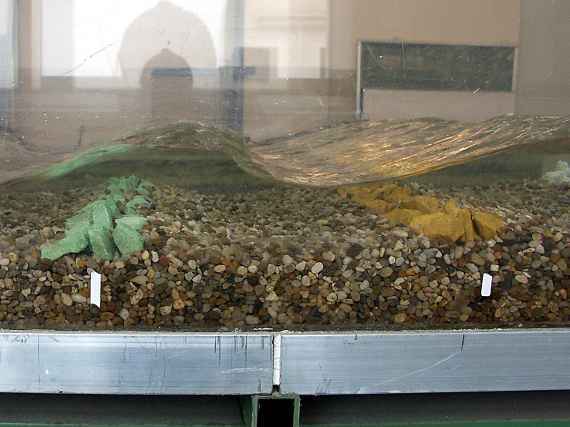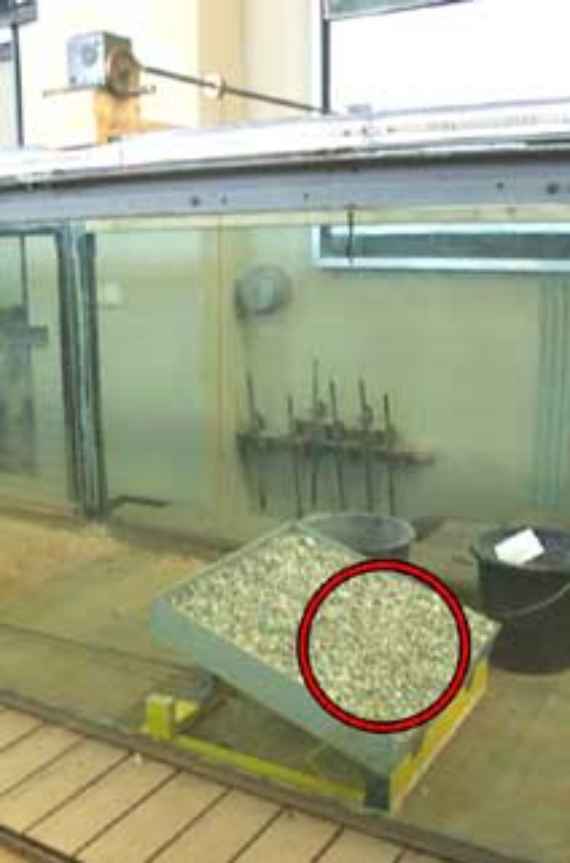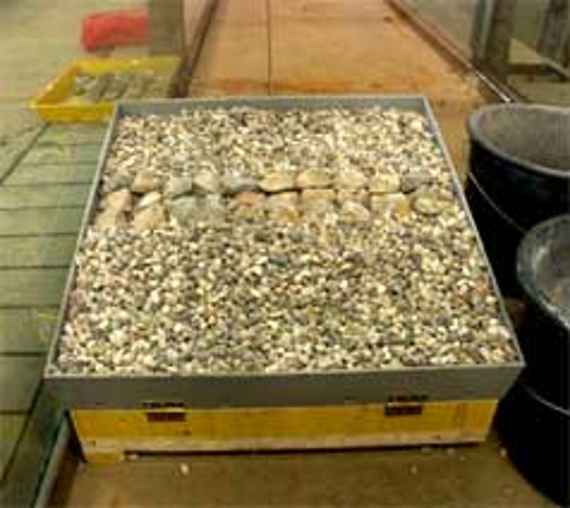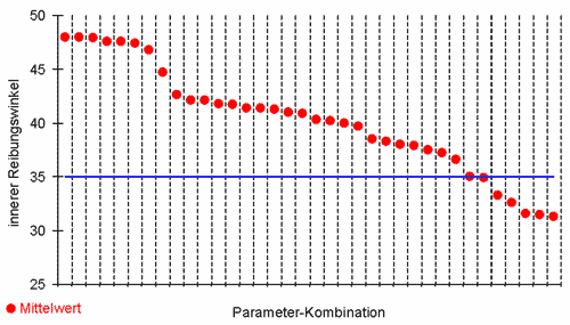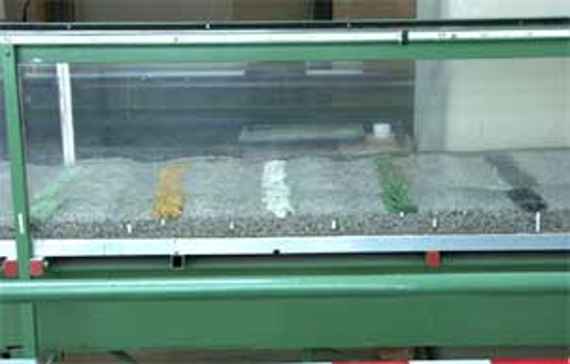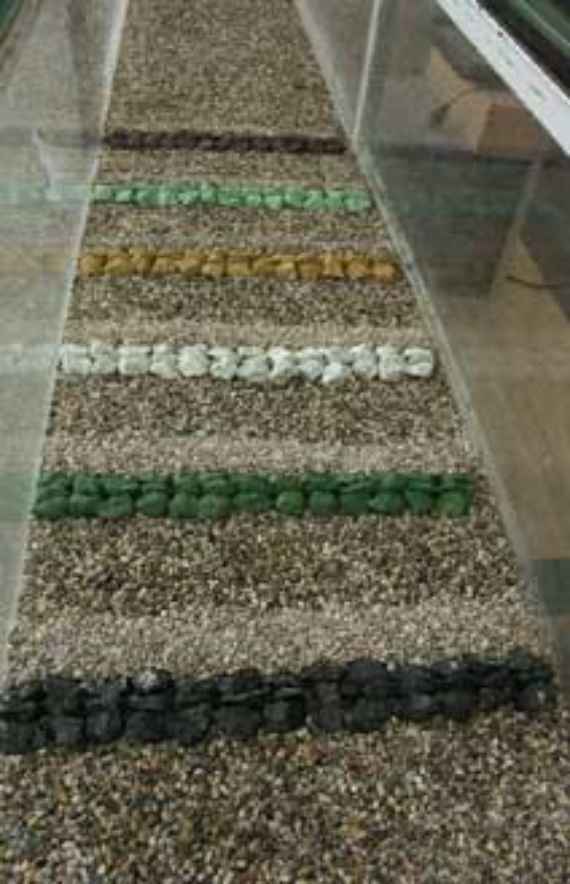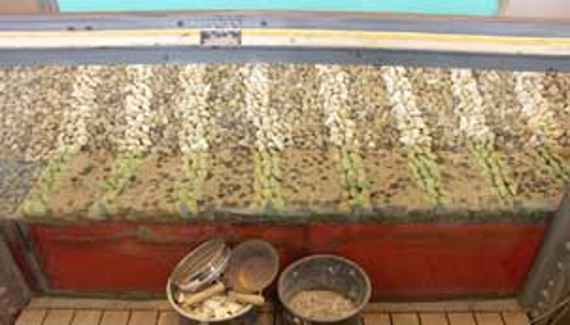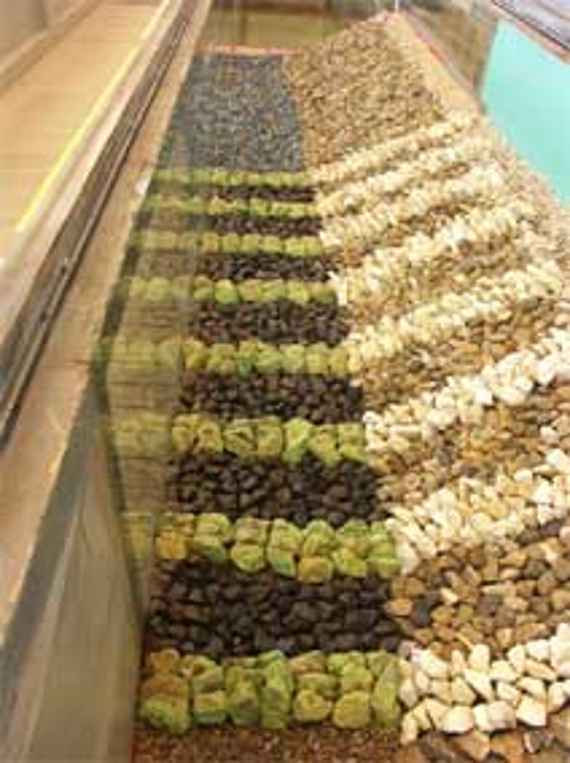Flat sloped ramps are used to protect river beds from (further) deepening. The use of such structures instead of sills is becoming increasingly popular. This is particularly due to the fact that structured ramps can be designed so that water organisms can pass freely in and against the direction of flow. Since the implementation of the EU Water Framework Directive into national law (BGBl I 2003/82), longitudinal connectivity has also been made legally binding.
The aim of the present work is to develop a design approach for the structure and proposals for the implementation of downstream bed and bank protection which are both ecologically and economically reasonable.
The investigations are divided into three parts:
Firstly, experiments were carried out with the aim of determining the internal friction angle of stone bars, consisting of three closely spaced rows of stones. The range of friction angles is of particular interest, since the value of the friction angle is directly included in the calculation of the equivalent sphere diameter of the bar-stones required to calculate sufficient stability in numerous design methods. To determine this friction angle, a tilting device was constructed, consisting of a cuboid open at the top, as shown in Figure 1. The cuboid was hinged at one edge and could therefore be lifted slowly on one side by means of a motor. The friction angle could be read off a standard protractor.
Tilting device for determining the friction angle (lateral)
Tilting device for determining the friction angle (seen from the front)
The subject of the investigations were different combinations of stone shapes, stone arrangement methods and the base material of the stone bars. It could be shown that the friction angle of 35°, which is often used as standard in the literature (for example: Landesanstalt für Umweltschutz Baden-Württemberg, 2000), can represent both an over- and an underestimation of the actual value. The results of the 36 different parameter combinations in total are shown in the next figure.
friction angles determined from the tests (diagram)
Based on the data obtained, sectional model tests were carried out. In the course of these tests, structured ramps with bars were constructed and different stone shapes and arrangements were exposed to different flow loads (see next 2 pictures). Numerous parameters with influence on the stability of the construction were varied, such as the ramp gradient and the ramp length.
Cutaway model of ramps (lateral)
Cutaway model of ramps
On the basis of the measurement data obtained, a new design formula for the required stone weight of bars in flatly inclined structured ramps could be established. The main requirement was a simple handling of the formula, which was achieved by the necessity of only five, usually known, input parameters.
visualization of an equation
In the empirically derived formula G is the required weight of the stones, ρs the density of the stone material, g the acceleration due to gravity, q the specific flow rate and Ir the ramp gradient. A special feature of this formula is the new parameter of the so-called degree of tolerance Ω, which is particularly useful for taking into account the economic efficiency of a project. A tolerance level of 0.03 means that 3 % of the stones may move during the design event.
In the third and final part of the investigations, the main focus was on the implementation of bank and bed protection downstream of ramps. Also, in this case a sectional model of a ramp was built. In contrast to the previous model, the embankment and the downstream bed were simulated on one side (see next 2 pictures). The stability and resistance against scouring of the slope, slope foot and downstream bed protection were tested for several common designs of slope, slope foot and downstream bed protection in practice.
Cutaway model with embankment and secondary bed (lateral)
Cutaway model with embankment and secondary bed
The surprising result showed that many of the current measures are clearly oversized. On the basis of the data obtained, recommendations were made for the economic design of the underwater area of ramps. For example, it turned out that a 1-layer embankment reinforcement provides sufficient protection, although in practice it is often executed in several layers. Regarding the bed protection downstream, it could be determined that a covering of the river bed with relatively light stone material and a density of 50 % offers a suitable resistance against scouring.
This research work was carried out and published as part of a dissertation at the University of Natural Resources and Applied Life Sciences. In addition, the entire work was also published in the publication series of the Federal Office for Water Management, volume 28.

